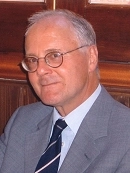Prof. Dr. Richard Gordon
richard.gordon@uni-erfurt.deAssoziierter Fellow (Max-Weber-Kolleg für kultur- und sozialwissenschaftliche Studien)
Sprechzeiten
nach Vereinbarung
Besucheranschrift
Max-Weber-Kolleg für kultur- und sozialwissenschaftliche Studien
Campus
Nordhäuser Str. 63
99089 Erfurt
Postanschrift
Universität Erfurt
Max-Weber-Kolleg für kultur- und sozialwissenschaftliche Studien
Postfach 90 02 21
99105 Erfurt

Zur Person
Forschungsprojekt
Mystagogue: small-time religious entrepreneurs as a type of individualisation in the Roman Empire
In linking der Magier and der Mystagoge, Weber noted that the latter had an indefinable but no doubt extensive history. The gradual shift in the Hellenistic period away from associations based on joint membership in civic groupings such as ‘tribes’ towards voluntarism, combined with the increased communicative possibilities opened up by Alexander’s conquest of the Achaemenid empire, tendentially favoured management of small religious groups over the wonder-worker. The rapid spread of Egyptianising cults into the eastern Mediterranean between 300 and 100 BCE must have stimulated mystagogic activity in other areas too, notably in the case of Dionysus. A pre-requisite here was the availability within urban families of the means to pay regular subscriptions and the (sometimes considerable) costs of admission. Nevertheless at all times individual resentment and public anxieties made mystagogic activity potentially hazardous.
Studies of the economic history of the period 200 BCE –160/80 CE suggest a fairly constant increase in indicators of economic activity, whether measured by coin-hoards, wrecks, extent of urbanism, agrarian population-densities or estimated tax-receipts. This is the indispensable back-ground to what seems to be a real increase in the intensity of urban religious associationism in the first two centuries of the Principate. Equally indispensable however was the continuing availability of interesting religious material for mystagogues to work on, both in the form of new deities and in the spread, especially in the second century CE, of fresh communicative modes we can collectively denote as teletai or mysteria, whose content could be freely invented by individual mystagogues and which in turn aroused new expec tations on the part of their clientèle. It is this dynamic between small-group supply and demand, rightly identified by Weber as dependent upon the access of middling urban groups to new religious ideas, that both required and fostered that specific auto-narrative focused upon independent religious capacity that we may call the mystagogic self.
Weitere Informationen
Abgeschlossene Projekte
Kolleg-Forschergruppe "Religiöse Individualisierung in historischer Perspektive"

